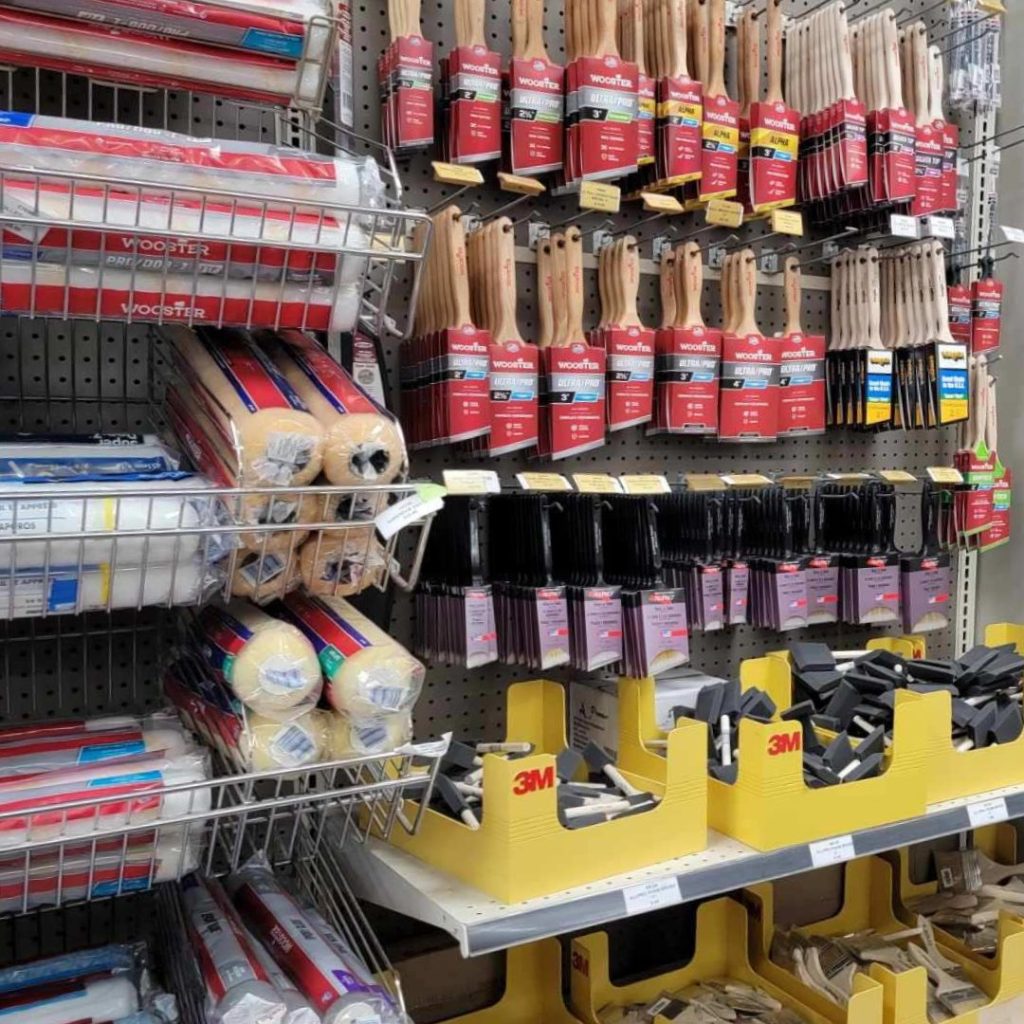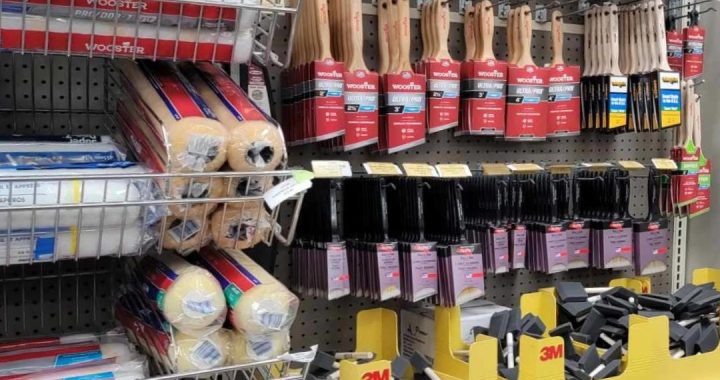When you look at paint brushes in the store, it’s honestly crazy: there are so many options! Largely, they look the same, but when you look closely, you begin to notice small differences. Why is this brush angled while this one isn’t? Why is this handle long and thin while this one’s short and stubby? And most importantly, which brush is right for my project? Here’s a quick overview to cover the basics, answer those questions, and help you navigate the brush aisle like a pro!

CATEGORIES OF BRUSHES
Brushes generally fall into two main categories—natural and synthetic bristles. Natural bristles, (often called china bristle brushes), are made from animal hair like hog or ox hair . . . badger. Horse. Yak?
These brushes are best suited for oil-based paints and varnishes and they apply those products beautifully. With that said, you shouldn’t use a natural bristle brush with water-based paints or coatings. Water causes the natural bristles to swell, lose their shape, and can ultimately ruin both the brush and the paint job.
For water-based paints, synthetic bristles are the way to go. The main synthetic materials you’ll typically see are polyester, nylon, and Chinex.
BRISTLE TYPES
Let’s look at those different filaments more closely:
CHINEX: Chinex bristles are incredibly durable. They keep their stiffness even in humid or hot conditions and are designed specifically to handle the challenges of low-VOC paints. Chinex bristles release paint easily, which gives you smoother application—and as a bonus—they clean up faster, too!
NYLON: Nylon bristles are also durable, but they’re much softer than chinex or polyester. That can be great for achieving a smooth finish, but keep in mind that nylon softens even more in hot weather or with extended use in latex paint. If you’re doing detail work, this softening will likely make things tricky.
POLYESTER: Polyester filaments are the stiffest of the bunch. They’ll hold their shape and maintain control in hot conditions, but they don’t hold as much paint. This means you’ll find yourself dipping into the can more often and smooth, even cut-in lines will be tougher to achieve. Generally, 100% polyester brushes aren’t recommended—you’re better off finding brushes that blend polyester with nylon or Chinex for better performance.
COMBINATIONS: It’s very common for manufacturers to combine two or more of these materials to achieve different brush characteristics (greater firmness or softness, for example).
STIFFNESS OR FIRMNESS—Why Does It Matter?
When it comes to finding the right stiffness or softness of a given brush, it all depends on what you’re painting and what product you’re applying.
For shinier finishes or smooth, flat surfaces like doors or trim, a softer brush will help minimize visible brush strokes, giving you a cleaner look.
On the flip side, if you’re cutting in around windows, doors, or trim, a stiffer brush gives you more control for crisp, clean lines.
Many brushes on the market offer a medium stiffness, which strikes a good balance for most projects.
ANGLED OR FLAT?
Now, let’s move on to the shape of the brush: is it angled or flat? And what’s the reason for the difference?
An angled brush has the potential to give you more precision when doing cut-in work, as when you’re painting the edges where walls meet the ceiling. It’s also possible that the angle allows you see what you’re doing a bit better, while making it easier to get into corners with more control.
With that said, many experienced painters still rely on flat brushes for cut-in work. At the end of the day, it’s all about your technique and what you’re comfortable with. Some contractors prefer to use angled brushes for the detail work and then switch to flat brushes for larger areas, like panel doors or trim. Others use the flat brushes for all their brush work. For DIYers, though, it’s generally best to use the angled brushes for all your cut-ins.
WHAT ABOUT THE HANDLES?
Finally, let’s touch on brush handles. There are many different types, and mostly, it’s all about comfort. Here are a few common ones:
- Rattail handles are long and thin, held almost like a pencil.
- Beavertail handles are rounded and fit comfortably in your palm.
- Fluted handles are more square but with rounded edges, making them easy to grip.
- Short handles are ideal for working in tight spaces where longer handles might get in the way.
As mentioned earlier, the main reason (though not the only reason) for the different handles is comfort. So find a brush handle that feels comfortable in your hand. The more comfortable you are, the more productive you’ll be. It’s that simple! So be sure to “try out” the brushes when you’re making your purchase. See how each one feels in your hand and choose the one that just seems best!
That’s a lot of info, but it should help you navigate the brush aisle like a pro!

